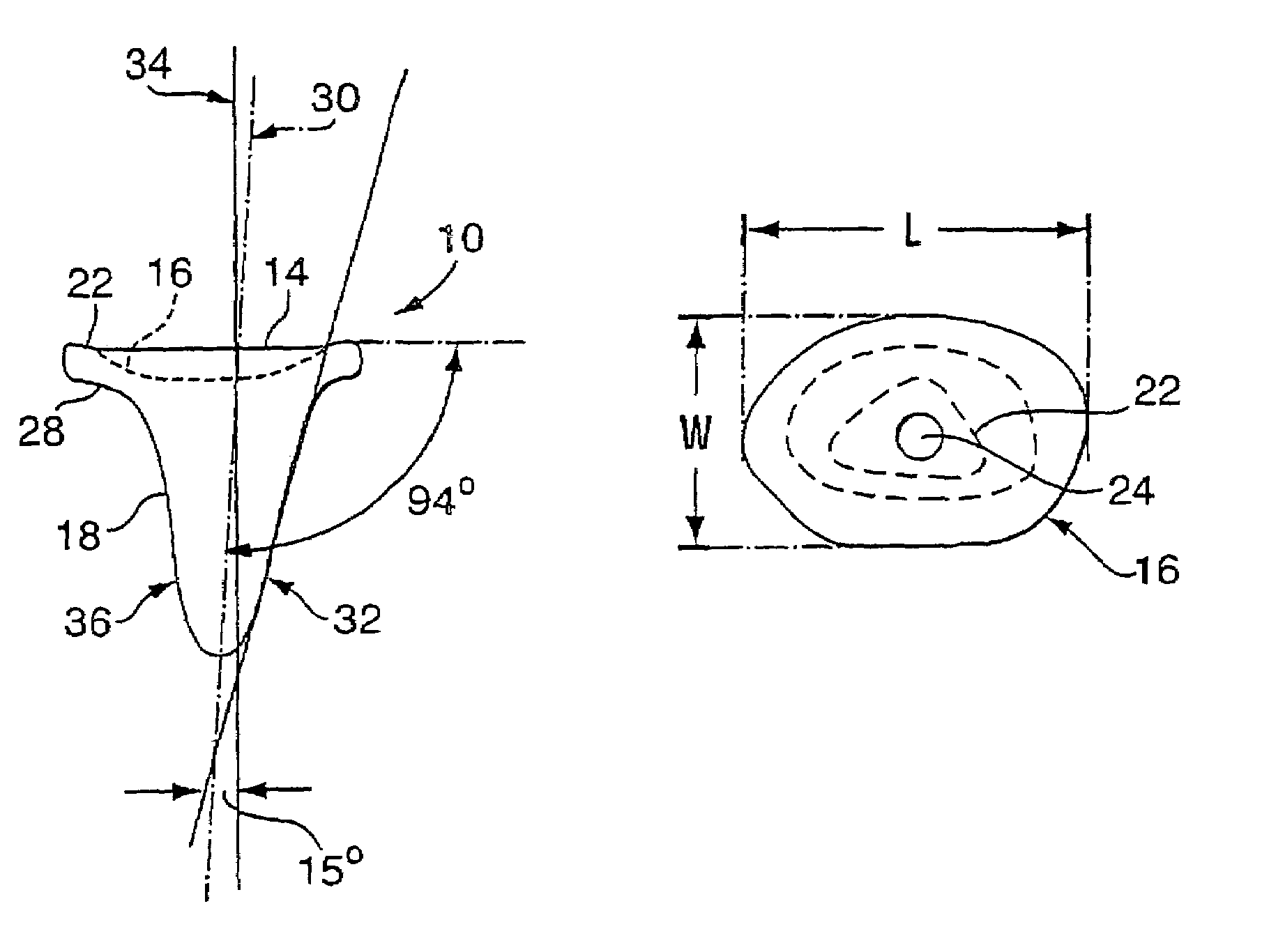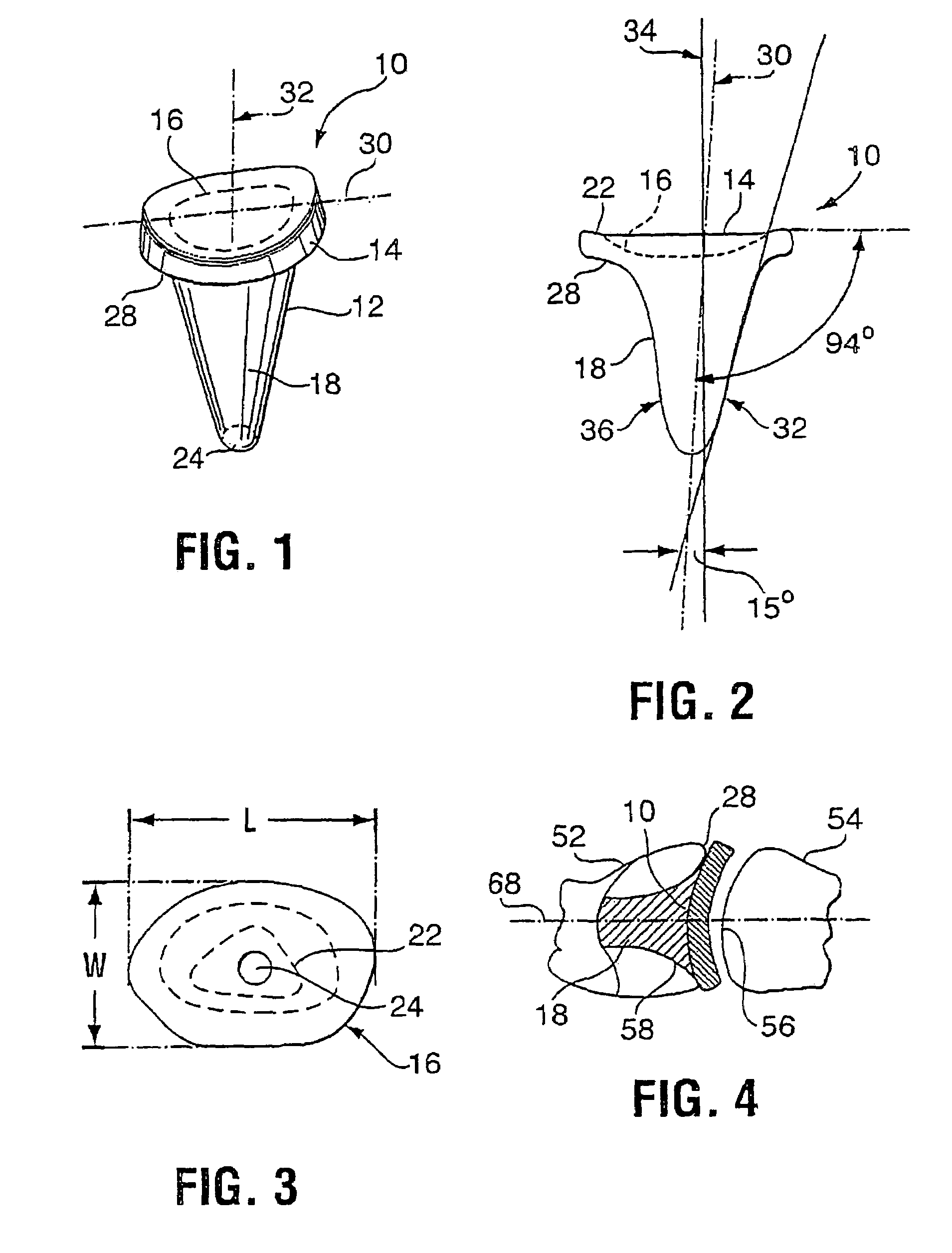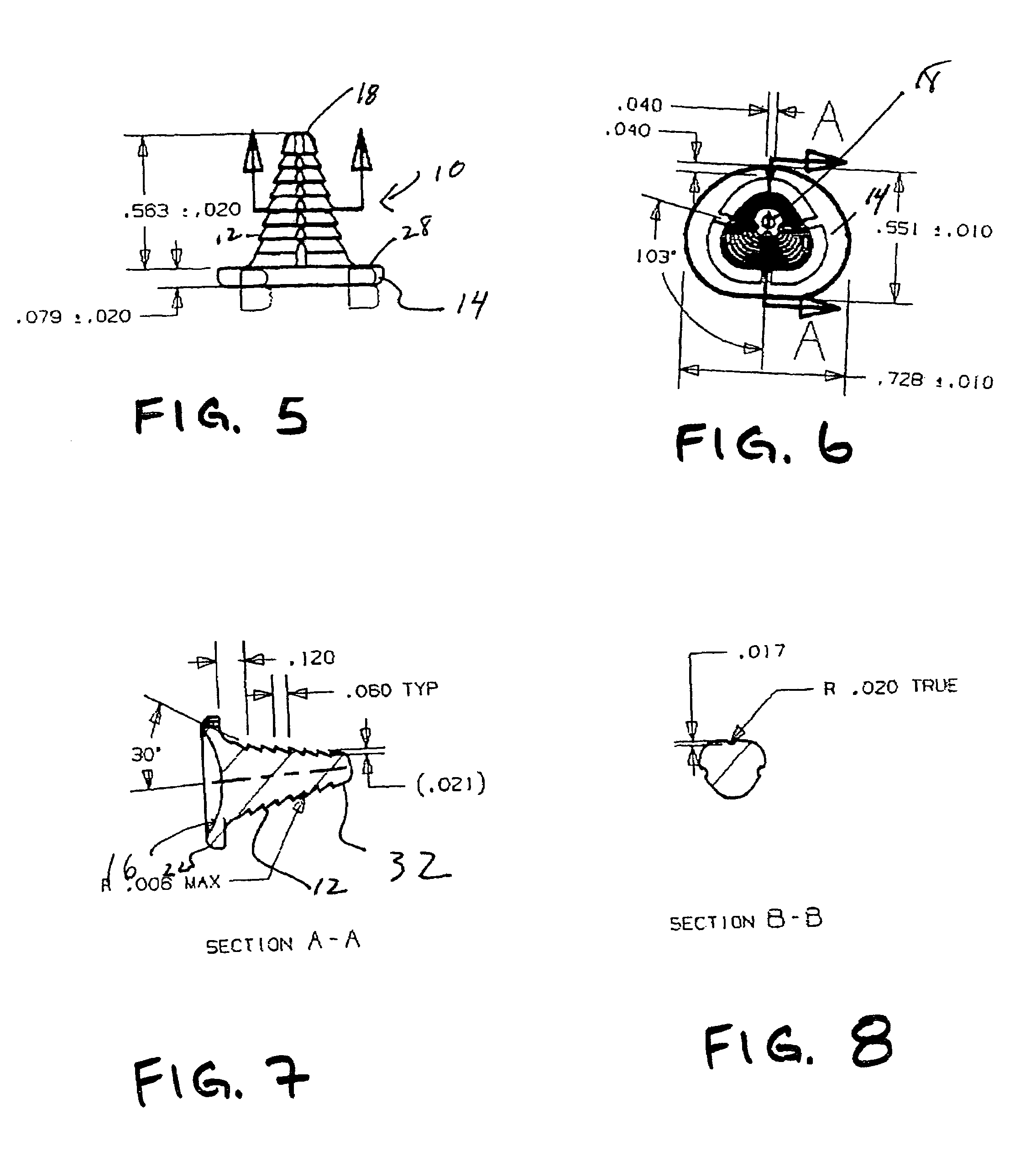Metatarsophalangeal resurfacing joint
a metal resurfacing and metatarsal joint technology, applied in the field of implants, can solve the problems of inability to achieve maximum stability of implants and incorrect anatomical positions, and achieve the effects of optimizing the fixation of implants to the bone, optimizing the fixation of implants, and increasing the stability of implants
- Summary
- Abstract
- Description
- Claims
- Application Information
AI Technical Summary
Benefits of technology
Problems solved by technology
Method used
Image
Examples
Embodiment Construction
[0034]Referring to FIG. 1, a great toe implant 10 has a base plate 14 coupled to an elongated stem 18, which is adapted to be inserted in the intramedulary canal of a proximal phalanx. The base plate is ovoid shaped, having a substantially concave bearing surface 16 that is intended to contact and articulate with the head of the first metatarsal in the great toe joint, and a flat rear surface 28 opposite the concave bearing surface. A stem 18 projects from the rear surface 28 of the base plate away from the concave bearing surface 16 at an angle. The stem 18 is anatomically shaped to an intramedulary canal of a proximal phalanx. As illustrated in the top plan view of the stem in FIG. 2, the stem 18 has a general triangular gibbous shape 22, with the extent of the angular gibbosity decreasing as the stem is further away from the base plate 14 whereby the bottom 18 of the stem is almost shaped in a circle. In the preferred embodiments illustrated in FIGS. 5 to 12, the triangularity is...
PUM
| Property | Measurement | Unit |
|---|---|---|
| anatomical angle | aaaaa | aaaaa |
| angle | aaaaa | aaaaa |
| angle | aaaaa | aaaaa |
Abstract
Description
Claims
Application Information
 Login to View More
Login to View More - R&D
- Intellectual Property
- Life Sciences
- Materials
- Tech Scout
- Unparalleled Data Quality
- Higher Quality Content
- 60% Fewer Hallucinations
Browse by: Latest US Patents, China's latest patents, Technical Efficacy Thesaurus, Application Domain, Technology Topic, Popular Technical Reports.
© 2025 PatSnap. All rights reserved.Legal|Privacy policy|Modern Slavery Act Transparency Statement|Sitemap|About US| Contact US: help@patsnap.com



